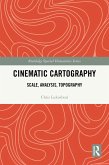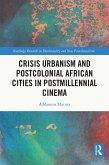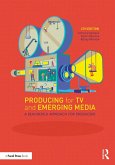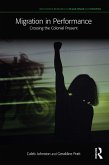Adorned with illustrative figures, examples, and case studies throughout, the book explores how cinema lends itself to cartography and, in turn, how cartography relates to both the individual and collective experience of cinema. By using cartography to understand space and scale in film, the book moves away from textual analysis or representation analysis to focus on the locational attribution of the sites where the cinematic landscape is being produced. It contends that viewers of moving images are active players in a complex network of cultural and mental geographies.
This volume is essential reading for students, scholars, and academics of cinematography, human, cultural, and social geography, cartography, and media studies, as well as those interested in these areas more generally.
Dieser Download kann aus rechtlichen Gründen nur mit Rechnungsadresse in A, B, BG, CY, CZ, D, DK, EW, E, FIN, F, GR, HR, H, IRL, I, LT, L, LR, M, NL, PL, P, R, S, SLO, SK ausgeliefert werden.









